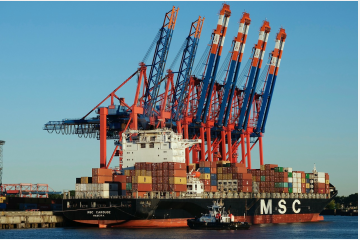The Federal Reserve Board Bank of New York’s Global Supply Chain Pressure Index (GSCPI) for February 2023 indicates that supply chain issues had receded to normal levels, a theme picked up by many outlets.
A variety of other data sources suggest it is premature to conclude that supply chain bottlenecks have reverted to their pre-COVID levels. Amore apt evaluation is that supply chain bottlenecks are resolving, yet issues continue to be more pervasive than before the pandemic struck.
The first piece of evidence is data from the Bank of Canada's Quarterly Business Outlook survey which directly asks a representative sample of Canadian firms the extent they are experiencing supply chain bottlenecks. Whereas GSPCI started showing substantial relief in Q3 2022, the BoC’s index did not start to show much easing until Q4 2022. Moreover, in Q4 2022, BoC's supply chain bottleneck index still had 22 percent of firms citing supply chain bottlenecks, compared with just 9.4 percent for Q1 2017 to Q4 2019. This suggests we are not back to pre-COVID levels of bottlenecks.
The second piece of evidence is monthly business outlook surveys for the manufacturing sector conducted by the Federal Reserve Board Bank of Philadelphia. The December survey showed 45 percent of respondents citing supply chains as moderately or significantly constraining capacity utilization, which was down substantially from the September iteration where the corresponding statistic was 68.2 percent. In comparison, the June statistic was 72.1 percent, while March 2022 saw a staggering 85.4 percent of respondents indicating supply chain bottlenecks were moderately or significantly impacting capacity utilization. This provides a second data point indicating bottlenecks are easing but have not returned to pre-COVID levels.
